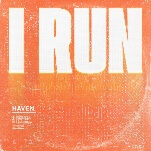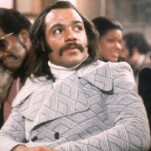The central image remains the same: the cybernetic body and digitized consciousness as a ship of Theseus problem. But instead of the post-human philosophizing of Oshii’s celebrated adaptation, the underlying concern of this nominal Americanization is actually more Japanese: national identity, with the Major’s prosthetic body as a metaphor for the futuristic cityscape around her, where the only vestiges of local culture are porcelain-skinned robot geishas. It’s a heady and un-commercial theme for a Hollywood sci-fi blockbuster, and one that the movie never completely articulates—but then, that’s true of all versions of Ghost In The Shell, whose stories of replacement limbs, linked minds, and artificial life are interesting chiefly because of what they could mean. Visually, it resembles nothing else in theaters. From the blocking and editing to the scientifically impossible coiffure, director Rupert Sanders (Snow White And The Huntsman) mimics the styling of Japanese animation, turning the film into its own beguiling meditation on all things synthetic. If it isn’t from Japan and it isn’t animated, can it still be anime?
The script—credited to William Wheeler, Jamie Moss, and Ehren Kruger—finds the Major and her hulking partner, Batou (Pilou Asbæk, doing a very committed impression of an anime dub voice actor), on the trail of the shadowy cyber-terrorist Kuze (Michael Pitt), who appears to be targeting the same tech corporation that developed the technology behind the Major’s body. It isn’t the most eloquently written of movies or the most suspenseful; a climactic battle with a tarantuloid tank (à la Oshii’s film) is one of this Ghost In The Shell’s lazier acts of pastiche. But it is an eyeful, with production design by Jan Roelfs (The Cook, The Thief, His Wife & Her Lover, Gattaca, Prospero’s Books) that hearkens back to the CD-ROM futurism of the mid-1990, to Nilo Rodis-Jamero’s designs for Virtuosity and Johnny Mnemonic, and to the days when sci-fi movies presented worlds more eclectic than our own. This is a design universe of plastic sheeting, tube lighting, and ribbed walls, where voxelated hologram ads stomp across the skyline like kaiju monsters and the textures of even commonplace objects seem alien.
It is in its designs, more so than in its generic corporate-conspiracy plot, that this new Ghost In The Shell finds tantalizing expressions of theme: the faces and limbs of hacked androids breaking up into insect-like forms as they attack; the lonely, recessed spaces of futuristic sleeping quarters; the grotesquerie of cybernetic enhancements; red light districts where human prostitutes dress like sex-bots to attract clientele. Johansson’s Kubrickian performance and the technical precision of the camera make its artifice seem almost haunting. It isn’t quite Ghost In The Shell, but from a metatextual perspective, that’s of a piece with its tale of a future where nothing is quite the real thing.
For thoughts on, and a place to discuss, plot details we can’t reveal in this review, visit Ghost In The Shell’s Spoiler Space.









































